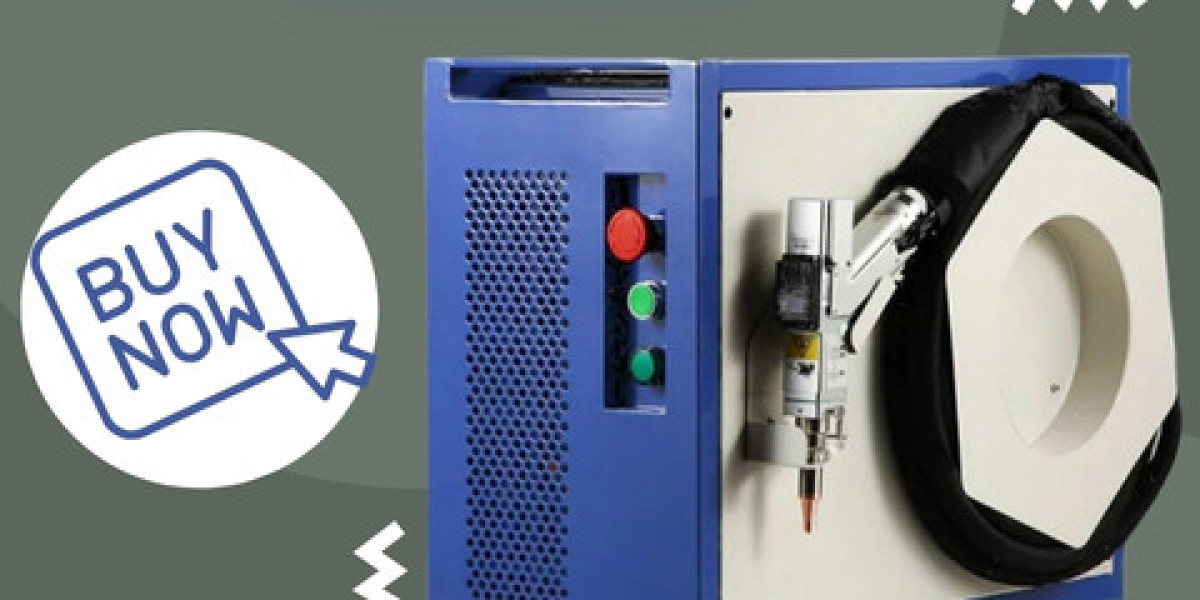The laser rust removal machine operates by directing a focused laser beam onto a surface affected by rust or contaminants. The energy of the laser instantly heats and vaporizes the rust without damaging the underlying material. This controlled process allows industries to clean metals, prepare surfaces, and extend the lifespan of valuable equipment.
How Laser Rust Removal Works
The working principle of a laser rust removal machine is based on laser ablation. When the laser beam interacts with the oxidized surface, the rust layer absorbs the energy, breaks apart, and evaporates. The underlying metal, being more reflective and having a higher heat resistance, remains intact. Unlike abrasive blasting or chemicals, this method requires no additional consumables, making it highly efficient for continuous operations.
Industrial Applications
The laser rust removal machine is versatile across different sectors:
Automotive Industry
Car manufacturers and restoration workshops use laser cleaning to remove rust, old coatings, and contaminants from chassis, engine components, and classic vehicles. The precision of the machine ensures that delicate structures are not damaged.Shipbuilding and Marine Industry
Vessels exposed to seawater often face corrosion challenges. A laser rust removal machine can treat large surfaces of ships, docks, and offshore platforms without the need for harmful chemicals or extensive downtime.Aerospace Sector
Aircraft components require exacting standards of maintenance. Lasers are used to remove oxide layers, paint residues, and surface rust to ensure safety and reliability without altering the metal structure.Oil and Gas Industry
Equipment such as pipelines, storage tanks, and drilling components are prone to corrosion. A laser rust removal machine ensures long-term maintenance by cleaning these parts efficiently while reducing environmental hazards.Manufacturing and Heavy Machinery
Factories use laser cleaning to maintain molds, welding joints, and production lines. The technology helps extend equipment lifespan and improve production quality.
Benefits for Industrial Growth
The rise of the laser rust removal machine is not only about cleaning surfaces but also about reshaping industrial standards. Its precision allows for targeted cleaning, reducing waste and downtime. Since the method eliminates the need for consumables such as abrasive materials or harsh chemicals, it also lowers long-term costs and reduces storage requirements.
Additionally, safety is enhanced because operators avoid exposure to toxic substances commonly found in chemical cleaning methods. Dust-free operation also makes laser cleaning more suitable for industries with strict cleanliness standards, such as food processing and pharmaceuticals.
Cost-Effectiveness in the Long Run
At first glance, investing in a laser rust removal machine may seem costly compared to traditional methods. However, the long-term return on investment is significant. Once purchased, the machine requires minimal maintenance, and there are no recurring expenses for consumables. Companies that transition to laser cleaning often report improved operational efficiency and reduced waste management costs.
Environmental Considerations
Sustainability has become a key focus for industries worldwide. The laser rust removal machine supports eco-friendly practices by eliminating chemical pollutants and reducing waste disposal needs. Since the process produces minimal dust and no secondary waste, it aligns with global efforts to adopt cleaner technologies.
Technological Advancements
Modern laser rust removal machines are increasingly user-friendly. With features such as portable designs, handheld devices, and automated integration with robotic systems, they fit seamlessly into different workflows. Smart control systems allow operators to adjust laser intensity, spot size, and frequency, making the machines adaptable for a wide variety of materials and thicknesses.
Real-World Case Study
A European automotive restoration company replaced its traditional sandblasting system with a laser rust removal machine. Within the first year, the business reported a 30% reduction in operational costs due to savings on consumables and faster project completion. In addition, customer satisfaction increased because the laser method preserved delicate vehicle structures and avoided warping or scratches. This example highlights how industries benefit not only financially but also in terms of reputation and service quality.
The Future of Industrial Cleaning
The adoption of the laser rust removal machine continues to expand across industries. As manufacturing demands grow and sustainability regulations become stricter, companies are turning to solutions that balance performance with environmental responsibility. Emerging models are becoming more compact, energy-efficient, and affordable, making them accessible even for small and medium-sized enterprises.
With ongoing innovations, integration with automation and robotics will likely dominate the next stage of development. This will allow industries to automate large-scale cleaning projects, further reducing labor requirements and improving consistency.
Training and Operation
Operating a laser rust removal machine does not require advanced technical expertise. Many modern machines come with intuitive interfaces that guide the operator through the cleaning process. However, industries often provide specialized training to ensure maximum efficiency and safety. With proper training, technicians can adapt laser cleaning techniques to various applications, from heavy rust removal to fine surface polishing.
Expanding Market Demand
The demand for laser rust removal machines has grown rapidly in Asia, Europe, and North America. Sectors such as automotive, aerospace, and construction are investing in this technology to remain competitive. Market analysts predict continuous growth as more companies realize the value of cleaner, faster, and safer rust removal solutions.
Final Thoughts
The laser rust removal machine has redefined the way industries approach surface cleaning and maintenance. By combining precision, efficiency, and sustainability, it provides a solution that aligns with modern industrial needs. Whether in automotive restoration, aerospace safety, or marine maintenance, this technology continues to demonstrate its value. With innovation driving further improvements, the future of rust removal lies firmly in laser technology.







